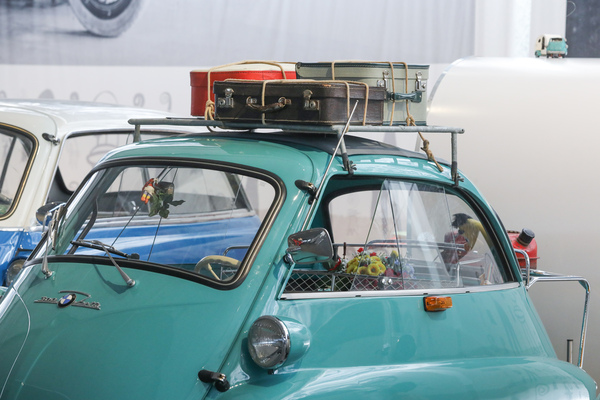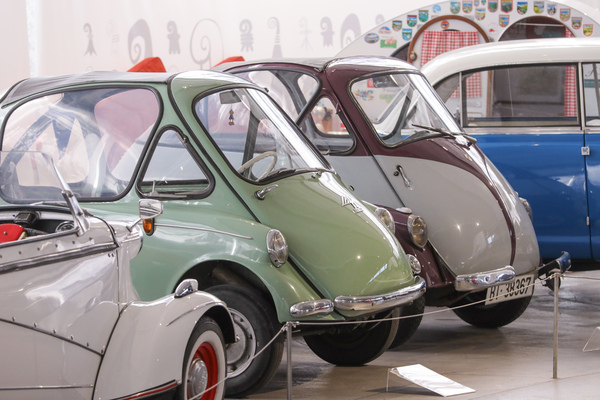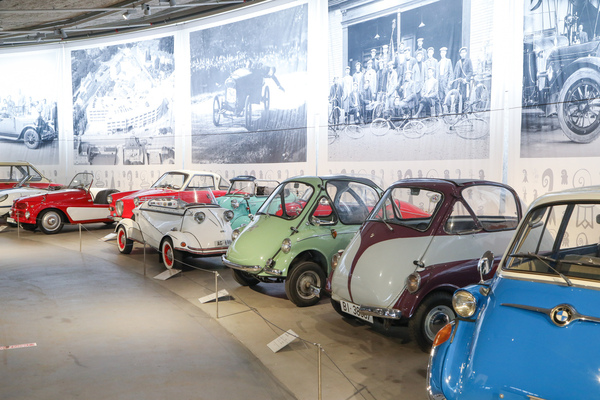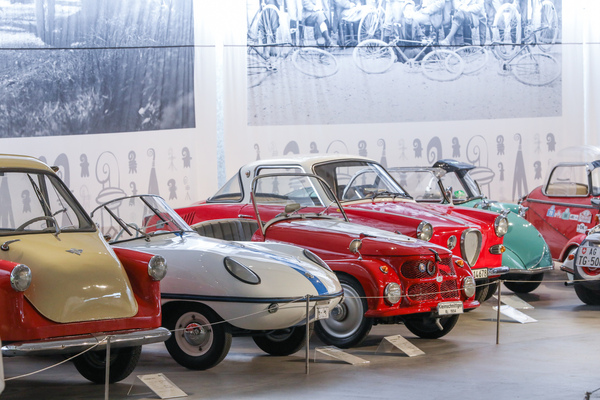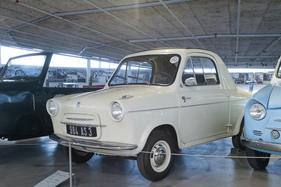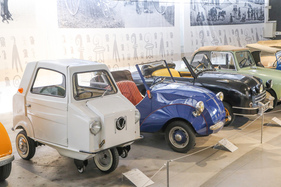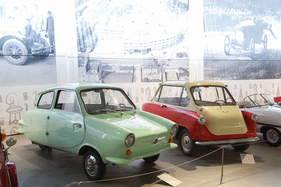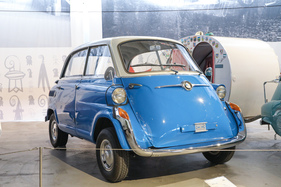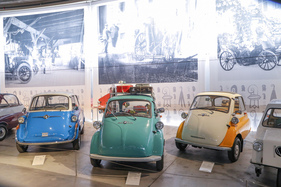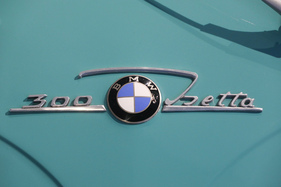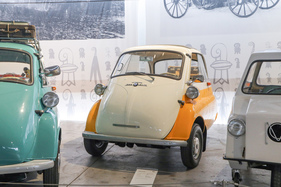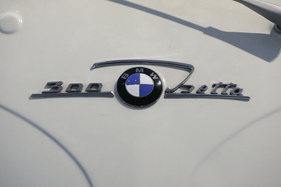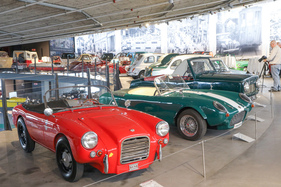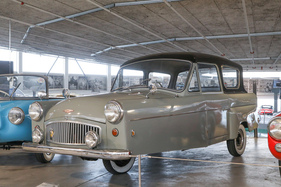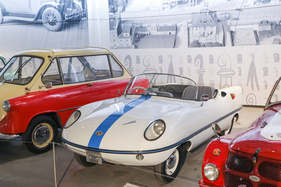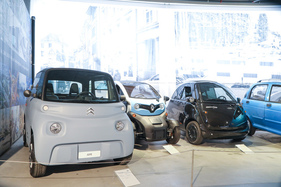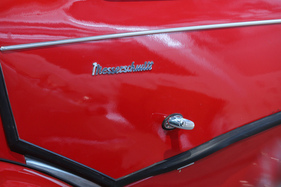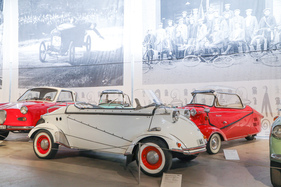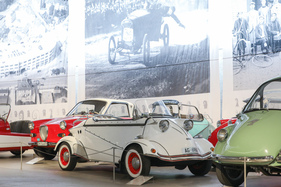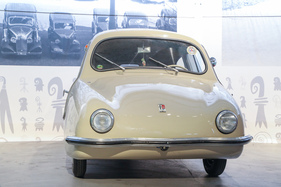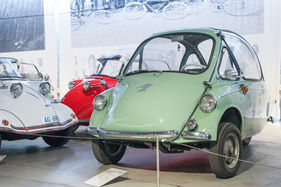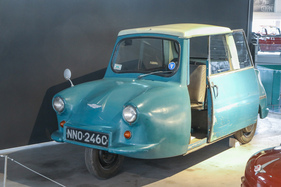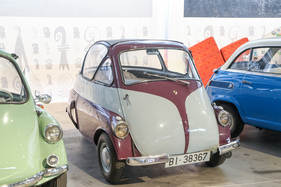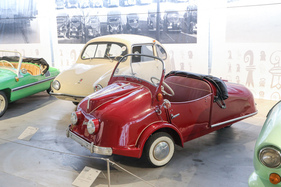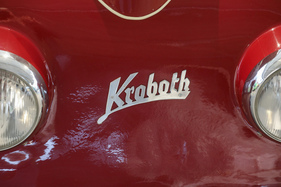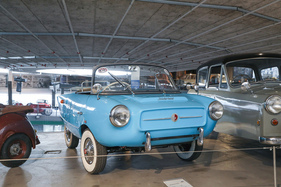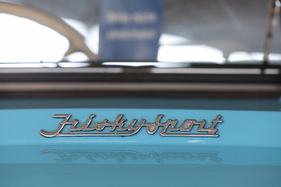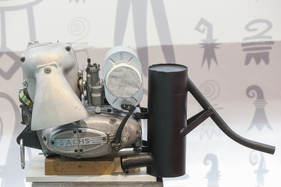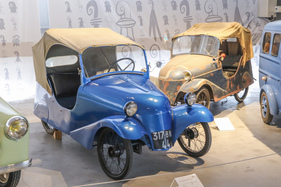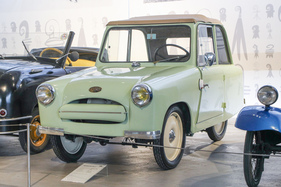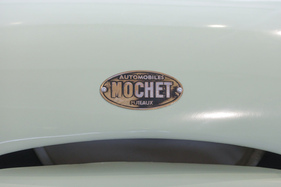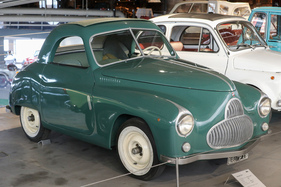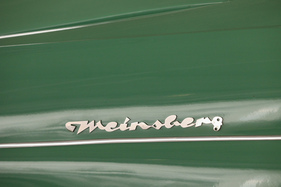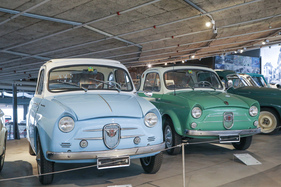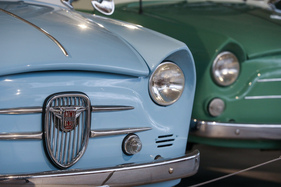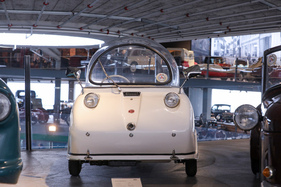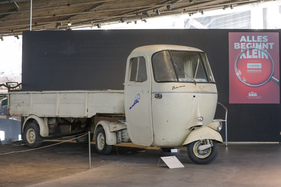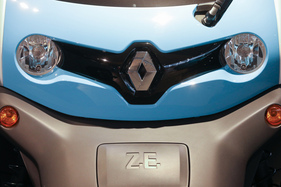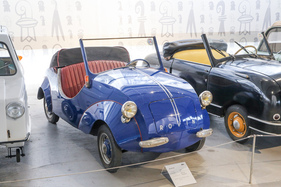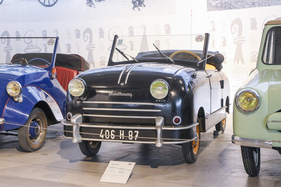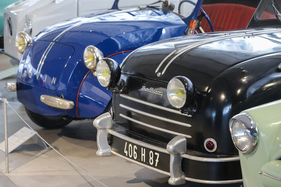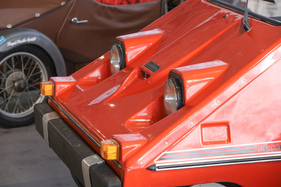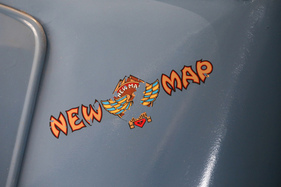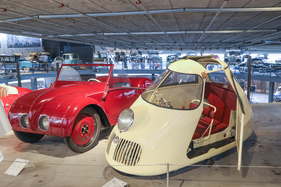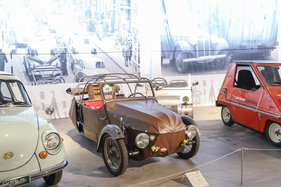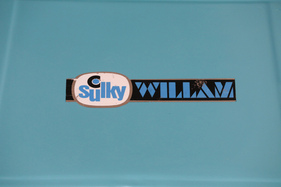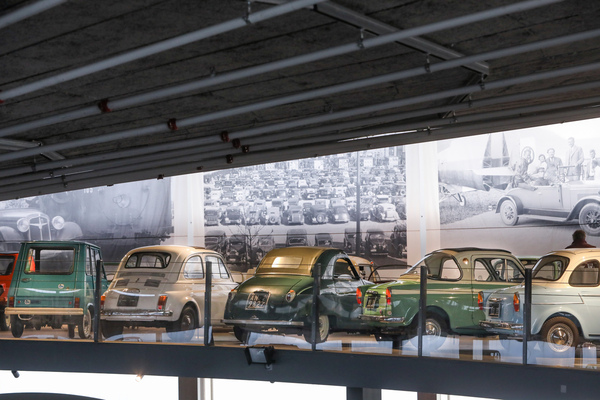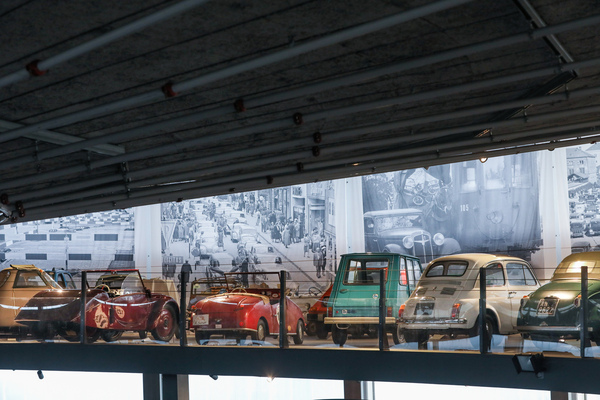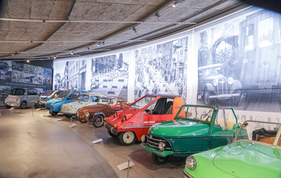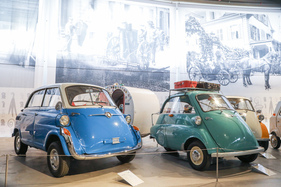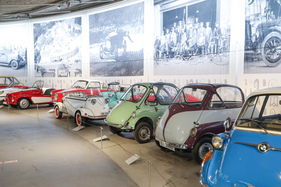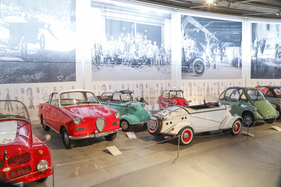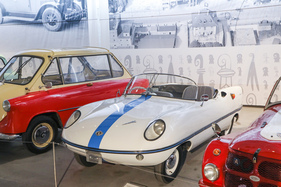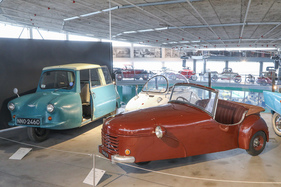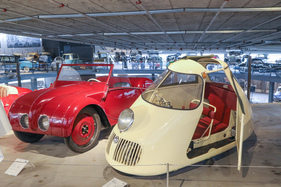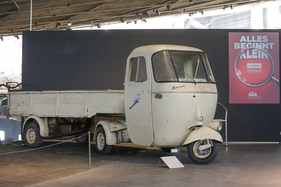This is the 28th special exhibition that Steffi Musfeld (with the support of Bernhard Täschler) has organized at his Pantheon in Muttenz/Basel, 14 years after the opening of the classic car center. It's almost a coincidence that it's the smallest cars that are now on the large ramp.

The fact that there are 54 different cars in total and that they all come from Swiss owners and collectors shows how diverse the scene is, especially in the small Alpine country.
Simplifying mobility
There were various triggers for the microcar movement. In Germany, for example, there was not only a lack of resources after the war, there were also many war invalids who thirsted for mobility. This led to the development of small cars that offered a minimum of mobility. Soon even the increasingly better-off Germans realized that an Isetta, Goggomobil or Heinkel Kabinenroller were much more comfortable and, above all, better protected from the weather than a bicycle or motorcycle.
In the second half of the 1950s, there was a great demand for small cars. However, as soon as the population started earning more, interest waned; a Beetle or an Opel Kadett simply offered even more luxury and prestige. Most of the small cars ended up in scrap yards or in the back of the garage, but a few were saved and have survived to this day.
Making mobility weatherproof
In other countries, similar but sometimes different advantages of small cars led to new designs and suppliers. For example, it was an argument whether you could park the car anywhere (like a motorcycle) or even drive it without a license (or with an easy-to-obtain motorcycle license). Taxes and insurance were also an argument.
This led to different designs depending on the legislation; in France, for example, small-capacity vehicles were popular, while in England they had to have three wheels in order to benefit from registration advantages.
Making mobility fun
However, it was not only minimalist vehicles that were created. Great designers were also involved in the matter. Giovanni Michelotti, for example, helped to develop the attractive design of both the Iso Isetta and the Meadows Frisky.
Sporty convertibles such as the Buckle Dart, the Meadows Frisky, the Spatz and the Belcar were created, while the FMR Tg500 Tiger even achieved performance and handling characteristics that allowed it to outperform significantly larger and nominally more powerful vehicles.
Country-specific differences
The exhibition at the Pantheon Basel, which is open to the public from October 24, 2022 to April 16, 2023, showcases the diversity of the world of microcars. The special show with 54 (!) vehicles is largely organized by country, making it easy to compare the differences in priorities and the resulting automobiles.
In principle, a microcar should be a maximum of three meters long and have a maximum displacement of 300 cm3, exceptions are made both in the scene and in the special show, especially since electric cars naturally also play a role in the line-up in the Pantheon.
From the modern era, two French models (Citroën Ami and Renault Twizy) and a Swiss design (Microlino) will be on show.
Broad spectrum
Even those who did not live through those times - the earliest cars are from the early post-war period - will enjoy the exhibition in Muttenz. The wealth of colors and shapes is impressive and the small cars can compete in creativity with many a full-grown vehicle of the time.
Front or rear-wheel drive, entry from the front, rear or side, but also from above, one and two-cylinder or electric engines, two (plus support wheels), three or four wheels, limousines, coupés and convertibles, everything is there, even a matching caravan or a miniature articulated lorry.
For the rarity hunter
Of course, the classics such as the BMW Isetta, Messerschmitt or Heinkel Kabinenroller are not missing. You could probably have filled the space with these models alone, as there are quite a few of them in Swiss collectors' hands. But it is the rarities that are the icing on the cake in this exhibition. Who has ever seen a Strübi single-track car?
This is a really interesting design with cyclops eyes (VW headlights) and two wheels for driving. You can leave the training wheels out to stop the car - after all, you can't get a foot out of the completely bodied vehicle. The two-seater must be breathtaking to drive, even the current owner is said to have great respect for it.
The Fulu, on the other hand, is really modern and even has four doors. The fact that it only has three wheels is only apparent at second glance, otherwise it would be mistaken for a typical small Japanese car of today.
These were just two examples; in fact, almost every one of the 54 cars deserves a detailed description. These will be available on site and in the forthcoming exhibition catalog. It is certainly worth booking a competent guided tour if you are not an expert yourself.
Further information about the exhibition and opening times can be found on the Pantheon website.






